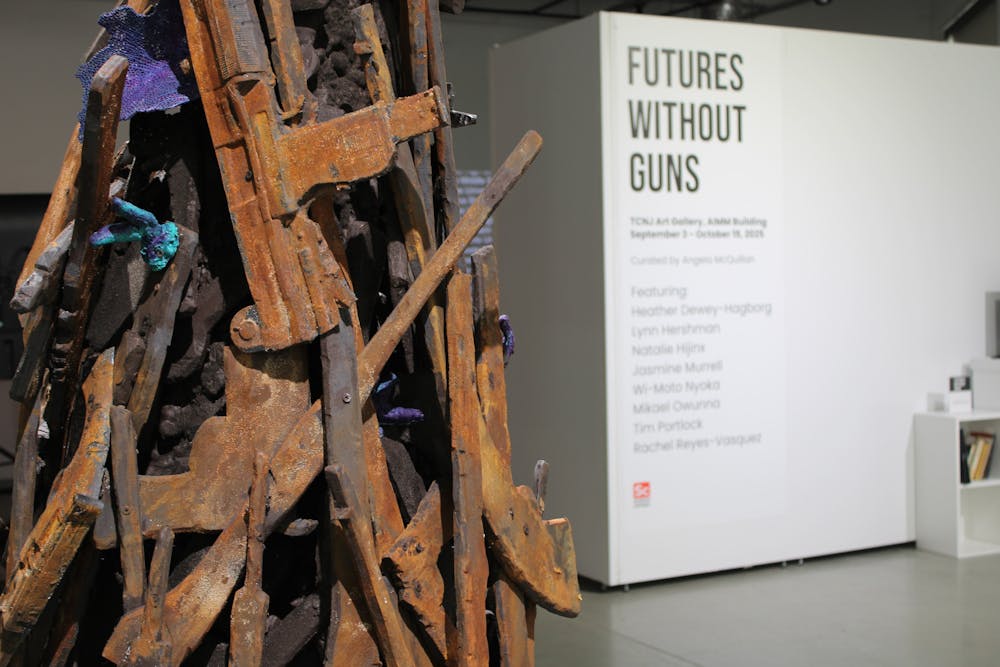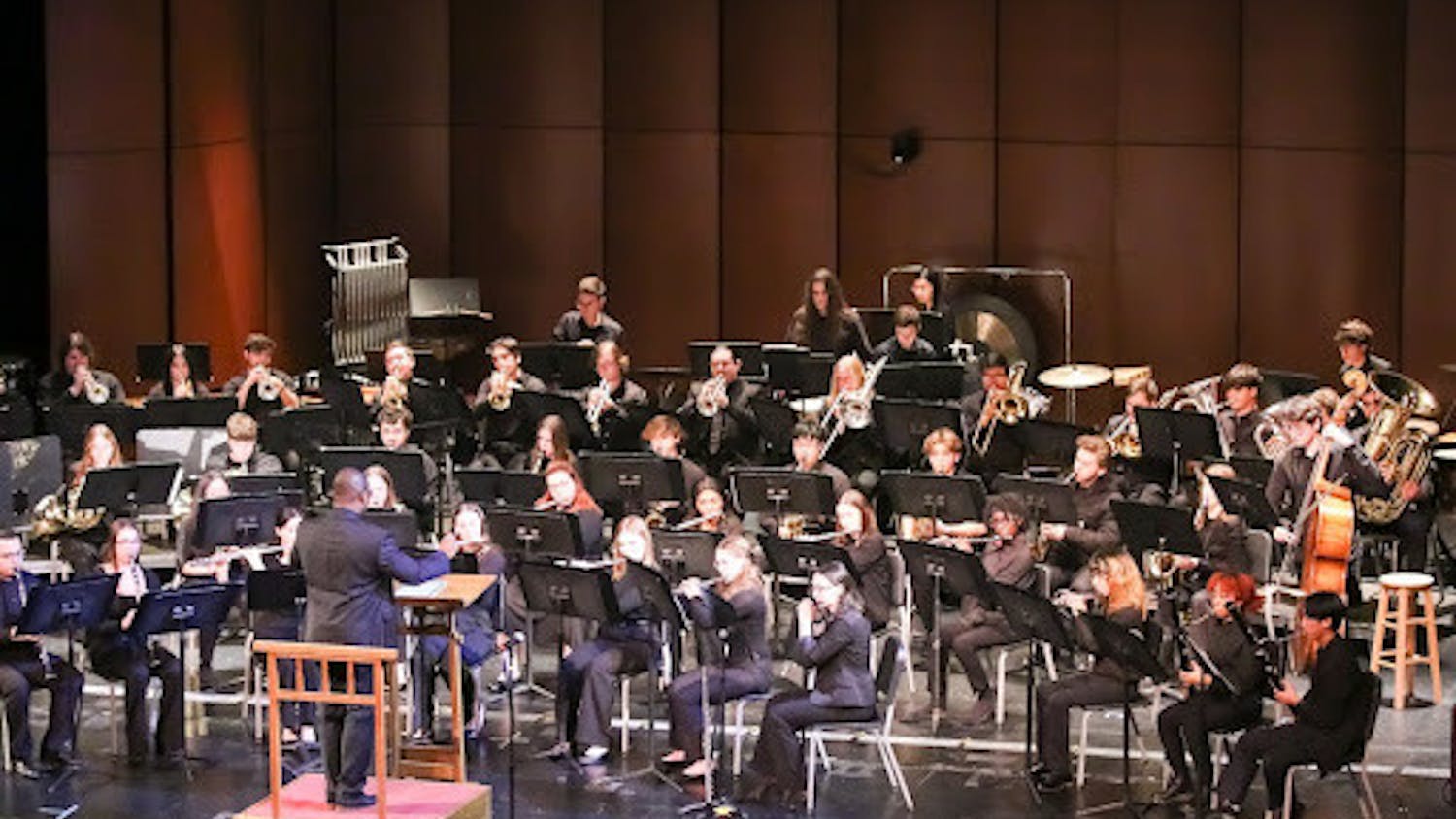By Sky Pinkett
Staff Writer
On Sept. 3, the College’s art gallery hosted one of its most pertinent and serious exhibits to date. “Futures Without Guns” uses paintings, videos, sculptures and more to tackle one of the most controversial topics dividing the country today, as well as one of the leading causes of death for young Americans: gun control.
“This exhibition does exactly what an academic gallery should do – engage in the academic community with important questions and force us to reflect on topics that affect us as individuals in these communities,” Pamela Barnett, the dean of the School of Arts and Communication, told The Signal.
The exhibit was first showcased back in 2024 at the University Science Center in Philadelphia, where USC’s gallery director, Angela McQuillan, curated the exhibit. Working to find a topic that mingled both art and science, McQuillan explained how the art show intended to present the complex issue of gun violence in Philadelphia and in the United States as a health equity issue.
“The artists weren’t meant to come up with solutions to gun violence, because the issue is so complex and not easily fixable,” she said during the artists' panel. “Their art was meant to envision a future scenario first to start working toward it.”
In the exhibition, these future scenarios come in forms ranging from computer-generated images of a destroyed Philadelphia being rebuilt without the use of guns, such as Tim Portlock’s “Time After the Hunter” to “Prayers Answered” by Mikael Owunna, which utilized unique camera techniques and glow in the dark paint to depict two men who were murdered by guns peacefully praying back-to-back as spirits.
The exhibit is a feat in art mediums, showcasing photography, musical composition, sculpture, comic art, video and more.
“The artists work in a huge range of media, and we have students here who do all kinds of things. So I think that is really valuable for students to see artists working in all these different media around a common idea,” said art gallery director Margaret Pezalla-Granlund.
All genres and art media were utilized for this show. Artists like Natalie Hijinx and Wi-Moto Nyoka integrated their horror and science fiction specialties to create “Long Action” and “A Funeral for The Death Machines” respectively, where future AIs have invented a way to turn gunpowder into a fungus, and where the gun and the bullet are being laid to rest and eulogized.
“The piece is… a way of practicing laying our guns down and stepping into a future without guns. And if we practice that enough, then maybe we can do it,” Nyoka said during the panel.
In the same breath, Nyoka admitted how complex and morally gray the issue of gun violence truly is, “[The piece] is really coming at it from that angle of why we like guns, why we use guns… the narrative is always the people from the NRA who are gun nuts, but what about the people who use it for self defense, to protect themselves?”
A lot of the artists, many of whom were from Philadelphia, related their own experiences with gun violence, whether through losing a loved one, witnessing a shooting nearby or a general feeling of unsafety in their own homes.
Award-winning filmmaker, Kyra Knox, created the 30-minute documentary, “Futures Without Guns,” following some of the artists on their long and often emotional journeys of creating their works for this exhibit.
“I wanted to pay respect to the artists’ stories and avoid exploiting their pain,” Knox told the audience.
The pain of the artists’ works was definitely palpable as they dealt with topics of school shootings and the use of the death penalty, to playgrounds being gunned down and people being murdered from gun violence.
“How can we move forward into a future with no guns? It really is about a future in which there is no bias, there is no racism, there is no sexism, there are none of these phobias. It is a future in which we agree not to hurt each other,” Nyoka said.
It is a challenging undertaking for a country whose culture — which includes colonialism, the military-industrial complex, and a national pride in the right to bear arms — is entrenched with the use of weapons. Challenging, but not impossible.
“I grew up in Australia, where they don’t have gun violence. Every time I go there, people are always asking me about our issue of gun violence because it is so foreign,” McQuillan shared.
Audience members and artists alike named various countries where gun violence is limited or nonexistent. These countries are proof that the exhibit's thesis, a future without guns, is very much within reach.
“We can do it,” Nyoka declared. “The question is, why aren’t we? What’s stopping us?”
“Futures Without Guns” will be open for free and public viewing through Oct. 19. Enter this gallery and immerse yourself in the future possibilities of a world without weapons.







